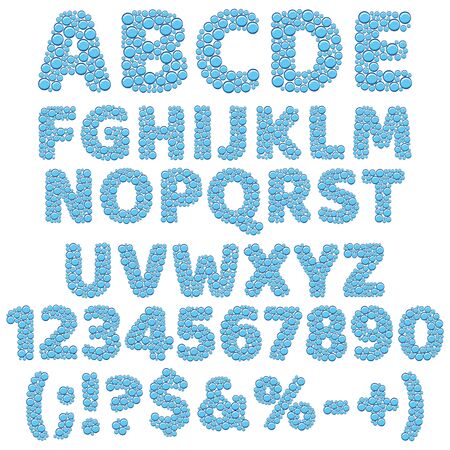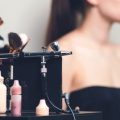Introduction to LED Light Therapy
LED light therapy has taken the American skincare scene by storm, popping up everywhere from dermatologist offices and med spas to home beauty routines. But what’s behind the buzz? At its core, LED (light-emitting diode) therapy uses specific wavelengths of light to penetrate the skin at different depths, triggering various biological processes. Unlike UV light, these wavelengths are non-damaging and are tailored for targeted skin benefits—from smoothing wrinkles to calming acne. Each color of LED light—red, blue, green, and infrared—interacts with the skin in unique ways thanks to their distinct energy levels and penetration abilities. As more people in the U.S. look for non-invasive, science-backed solutions for healthier skin, understanding how each type of LED works is essential for choosing the right treatment for your needs.
2. Red Light: The Go-To for Anti-Aging
When it comes to anti-aging treatments, red LED light therapy stands out as a top choice in American med spas. But what makes this wavelength so powerful? Let’s break down the science and skin benefits behind red LED light, especially why it’s a staple in countless facial and wellness clinics from LA to New York.
How Red LED Light Works on Your Skin
Red LED light typically operates at wavelengths between 620-750 nm, which allows it to penetrate deeper into the skin compared to other colors. This depth means it can reach fibroblast cells—the powerhouses responsible for collagen production. By stimulating these cells, red light encourages the creation of new collagen and elastin, two proteins essential for keeping skin firm, plump, and youthful-looking.
Key Benefits of Red LED Light Therapy
| Benefit | How It Works | Visible Results |
|---|---|---|
| Boosts Collagen Production | Stimulates fibroblasts deep within the dermis | Smoother, firmer skin over time |
| Smooths Fine Lines & Wrinkles | Promotes new cell growth and repair | Reduction in crow’s feet and forehead lines |
| Improves Overall Tone & Texture | Enhances blood circulation and nutrient delivery | Glowing, more even complexion |
| Speeds Up Skin Recovery | Decreases inflammation post-procedure (like microneedling or peels) | Less redness and downtime after treatments |
Why American Med Spas Love Red Light Therapy
The popularity of red LED light therapy across the U.S. isn’t just hype—it’s rooted in results. Clients are drawn to non-invasive options that deliver visible anti-aging effects without needles or downtime. Plus, the treatment is quick (usually 15-30 minutes), comfortable, and suitable for all skin types. Whether you’re battling early signs of aging or looking to maintain your glow, red LED sessions have become a go-to for anyone wanting that signature Hollywood radiance.

3. Blue Light: Your Acne-Fighting Ally
When it comes to tackling acne, blue LED light has become a buzzword in American skincare circles—especially among teens and adults struggling with breakouts. But what exactly makes blue light such a powerful tool in the fight against blemishes? Let’s break down its science, benefits, and how it fits seamlessly into everyday skincare routines.
How Blue LED Works on Acne
The secret behind blue LED therapy lies in its ability to target acne at the source. Blue light (typically within the 405-420 nm wavelength range) penetrates the skin just enough to reach the sebaceous (oil) glands. Here, it disrupts the growth cycle of Cutibacterium acnes—the bacteria most often responsible for inflammatory breakouts. By neutralizing these bacteria, blue light reduces the frequency and severity of acne flare-ups without harsh chemicals or prescriptions.
Calming Inflammation and Redness
Beyond its antibacterial effects, blue LED is known for its anti-inflammatory properties. This means it helps calm redness, swelling, and irritation commonly associated with pimples and cystic acne. Many users notice that their skin feels less sensitive and appears more even-toned after consistent use, making blue LED an ideal option for those dealing with angry, inflamed breakouts.
Blue Light in Real-Life American Skincare Routines
In the U.S., where fast-paced lifestyles meet high expectations for clear skin, blue LED devices are popping up everywhere—from dermatologist offices to home-use gadgets at major retailers like Ulta and Sephora. Teens love them as a gentle alternative to drying spot treatments, while adults appreciate how easily they integrate into existing regimens. Whether you’re using a handheld wand after cleansing or scheduling weekly sessions at your local medspa, blue LED can complement cleansers, serums, and moisturizers without causing additional irritation or downtime.
Ultimately, incorporating blue light therapy into your routine offers an accessible, non-invasive way to take control of acne—helping Americans of all ages put their best face forward with confidence.
4. Green Light: Brightening and Balancing
Green LED light therapy is gaining traction in the United States, especially among people looking to tackle uneven skin tone and stubborn hyperpigmentation. While red and blue LED lights get most of the attention, green light brings its own unique set of benefits that are often overlooked.
How Green LED Works on Skin
Green LED operates at wavelengths around 520-560nm. Its primary action is to target melanocytes—the cells responsible for producing melanin, the pigment that gives skin its color. By influencing these cells, green light can help disperse clusters of excess melanin, leading to a more even complexion. This makes it a popular choice for individuals dealing with age spots, sun damage, or post-inflammatory hyperpigmentation.
Benefits of Green LED for Skin Tone
| Benefit | How It Works | Who Should Try It? |
|---|---|---|
| Brightening Dull Skin | Reduces excess pigmentation and reveals a fresher layer of skin | Those experiencing dullness or dark patches |
| Balancing Uneven Tone | Targets melanin clusters to smooth out discoloration | Anyone with sun spots or acne scars |
| Soothing Hyperpigmentation | Calms inflammation and regulates pigment production over time | Sensitive skin types prone to redness or blotchiness |
How U.S. Beauty Clinics Use Green LED Light
Many American medspas and dermatology clinics now incorporate green LED into their facial protocols. It’s commonly layered with other LED lights during multi-step treatments, such as combining red for anti-aging and blue for acne before finishing with green to brighten and balance. Treatments usually last 15-30 minutes per session, and clients often see visible improvements after a series of appointments.
Typical Treatment Steps in U.S. Clinics:
- Cleansing and prepping the skin
- Customized mask or serum application (often antioxidants or brightening ingredients)
- Green LED exposure for targeted areas (face, neck, hands)
- Sunscreen application post-treatment to protect new results
Your Takeaway:
If you’re struggling with uneven skin tone or persistent dark spots, green LED therapy could be your new go-to solution. It’s gentle enough for most skin types and fits seamlessly into both professional treatments and at-home devices sold in the U.S., offering a science-backed path to a brighter, more balanced complexion.
5. Infrared Light: Deep Healing Power
What is Infrared LED Light?
Infrared LED light operates at a wavelength just beyond what our eyes can see, but its effects are definitely felt by the body. Unlike visible red, blue, or green LEDs, infrared penetrates deeper into the skin and underlying tissues, making it uniquely suited for therapeutic purposes.
The Science Behind Infrared’s Healing Abilities
When you expose your skin to infrared LED light, the energy stimulates cellular repair and increases circulation. This enhanced blood flow brings oxygen and nutrients to damaged areas while helping flush out toxins. The result? Faster healing from injuries, reduced inflammation, and less muscle soreness. Scientific studies have supported infrared’s potential in aiding recovery for athletes and anyone experiencing muscle or joint discomfort.
Pain Relief That Goes Beyond Skin-Deep
Infrared therapy is increasingly recognized as a non-invasive way to manage pain—whether it’s chronic back aches, arthritis, or post-workout soreness. By reaching deep into muscles and connective tissue, infrared light soothes tension and helps decrease pain signals sent to the brain. No wonder physical therapists and wellness clinics across America are integrating infrared LED treatments into their routines.
Infrared in American Wellness Culture
The American wellness scene has embraced infrared technology for its restorative properties. You’ll find infrared saunas in high-end gyms, yoga studios, and even home setups. After intense workouts, many Americans turn to portable infrared LED devices or full-body panels to jumpstart recovery and minimize downtime. It’s become a favorite among fitness enthusiasts looking for that extra edge in performance and self-care.
Is Infrared LED Right for You?
If you’re searching for a safe, drug-free way to support healing, reduce pain, or recover faster after exercise, infrared LED light could be a game-changer. Always check with your healthcare provider before starting any new wellness regimen—especially if you have existing medical conditions—but for most people, infrared is a powerful addition to a holistic health routine.
6. How to Pick the Right LED Light for Your Skin Needs
Choosing the perfect LED light therapy for your skin isn’t just about picking a color—it’s about finding what fits your unique skin goals and daily routine. Here’s a breakdown to help you make the most informed decision, whether you’re exploring pro-level treatments or want to bring spa vibes home.
Assess Your Skin Concerns First
Start by identifying your top skin priorities. Are you fighting breakouts, struggling with redness, or aiming for an age-defying glow? Each LED wavelength targets different concerns:
- Red light: Go-to for anti-aging, collagen boost, and soothing inflammation.
- Blue light: Best for battling acne-causing bacteria and reducing oiliness.
- Green light: Helps with pigmentation, sun spots, and calming overall tone.
- Infrared: Penetrates deepest—think wound healing and boosting circulation.
Lifestyle Matters: Convenience vs. Commitment
If you’re always on-the-go or have a packed schedule, at-home LED devices can easily slot into your routine. These gadgets are designed for safety and user-friendliness, but remember—they usually deliver gentler results compared to in-office treatments. If you crave faster transformations or have stubborn skin issues, professional-grade sessions (think dermatologists or med spas) provide stronger output and custom protocols.
Pro Tips for Americans Choosing LED Therapy
- Time Commitment: At-home devices often require consistent use (like 10-20 minutes several times a week), while professional treatments pack more punch in fewer sessions.
- Sensitivity Check: Always patch test new devices at home. If you have sensitive skin or underlying conditions, consult your dermatologist before diving in.
- FDA-Cleared Devices: Look for devices labeled as “FDA-cleared” for peace of mind—these meet U.S. safety standards.
Professional vs. At-Home: What’s Right For You?
If you’re new to LED therapy or want maintenance between pro sessions, at-home masks and wands are wallet-friendly and fit busy American lifestyles. For more dramatic results or if you’re managing complex skin issues, professional sessions ensure tailored care under expert supervision.
The bottom line? Match the LED type to your main concern, factor in how much time you realistically have, and don’t hesitate to chat with a licensed skincare provider if you’re unsure which device—or color—will give you that healthy American glow.
7. Safety Tips and Cultural Buzz: What Americans Should Know
Essential Safety Advice for LED Light Therapy
When it comes to incorporating LED light therapy—whether red, blue, green, or infrared—into your skincare routine, safety is key. Always wear protective goggles if treating the facial area, and never stare directly into the LEDs. Adhere strictly to recommended usage times; overexposure can lead to skin irritation or eye discomfort. If you have any underlying skin conditions, such as melasma or eczema, consult with a dermatologist before starting treatment.
Common Misconceptions About LED Light
LED light devices are often seen as “miracle gadgets,” but it’s important to manage expectations. While these lights can help reduce inflammation, fight acne-causing bacteria, and support collagen production, they aren’t overnight fixes. Another myth is that all LED devices are created equal—the reality is that professional-grade devices deliver more consistent results than many at-home alternatives. Lastly, some believe that more is always better; in truth, too frequent or lengthy sessions can do more harm than good.
The American Obsession: LED Lights in Self-Care Culture
In the U.S., LED light therapy has become a cornerstone of the modern self-care movement. From influencer skincare routines on TikTok to spa-grade treatments in dermatology clinics across New York and Los Angeles, Americans love their tech-driven beauty tools. The convenience of at-home devices fits seamlessly with the fast-paced American lifestyle, while the promise of glowing skin appeals to all ages and genders. This enthusiasm is further fueled by celebrity endorsements and a growing focus on holistic wellness.
Final Takeaway: Use With Intention
If you’re thinking about adding LED light therapy to your regimen, prioritize safety and realistic expectations. Choose FDA-cleared devices when possible, follow instructions diligently, and remember—consistency matters more than intensity. In America’s ever-evolving beauty landscape, LED light has found its place as both a science-backed tool and a pop culture phenomenon.

